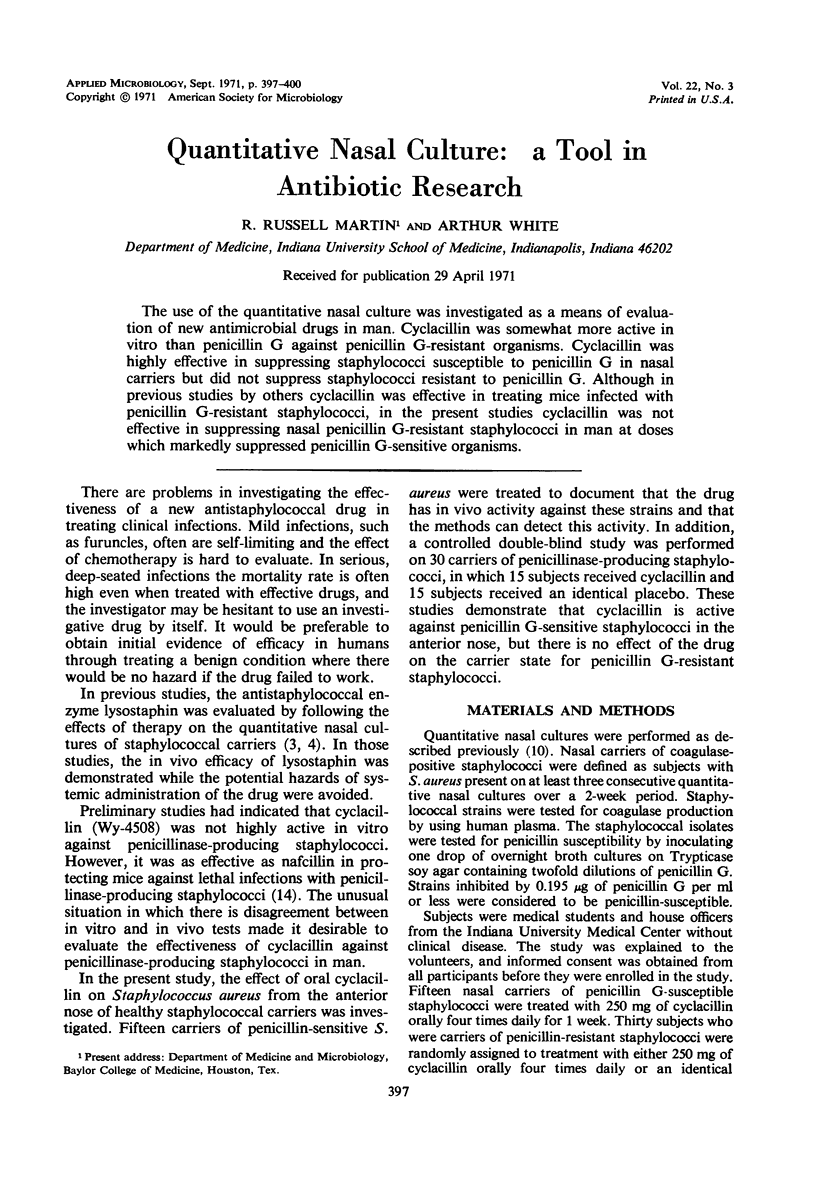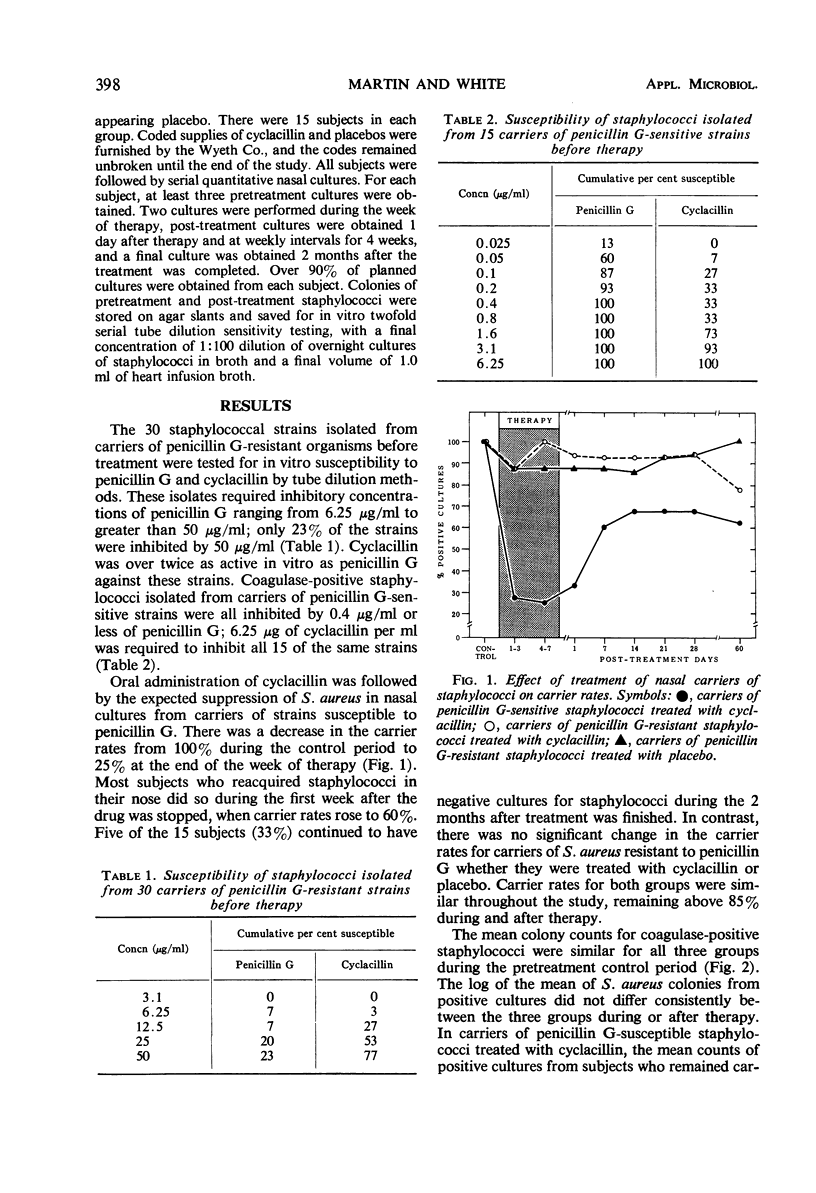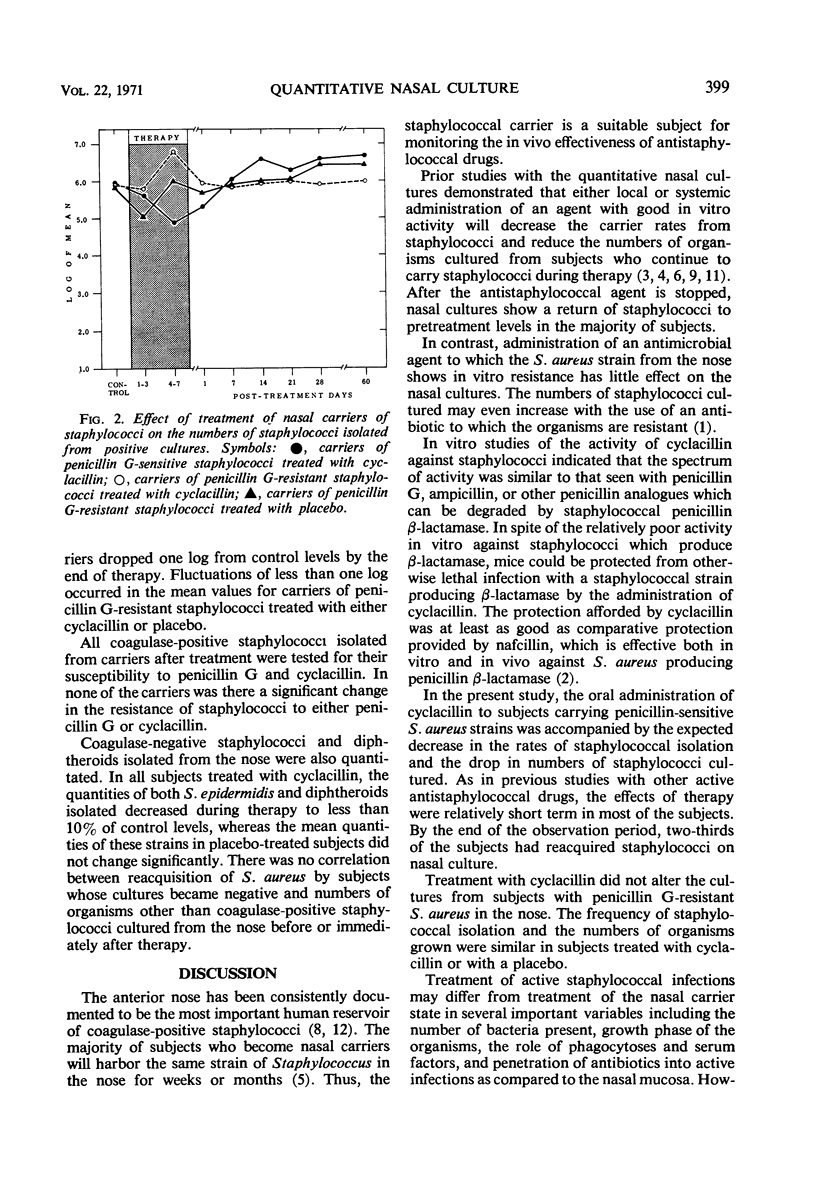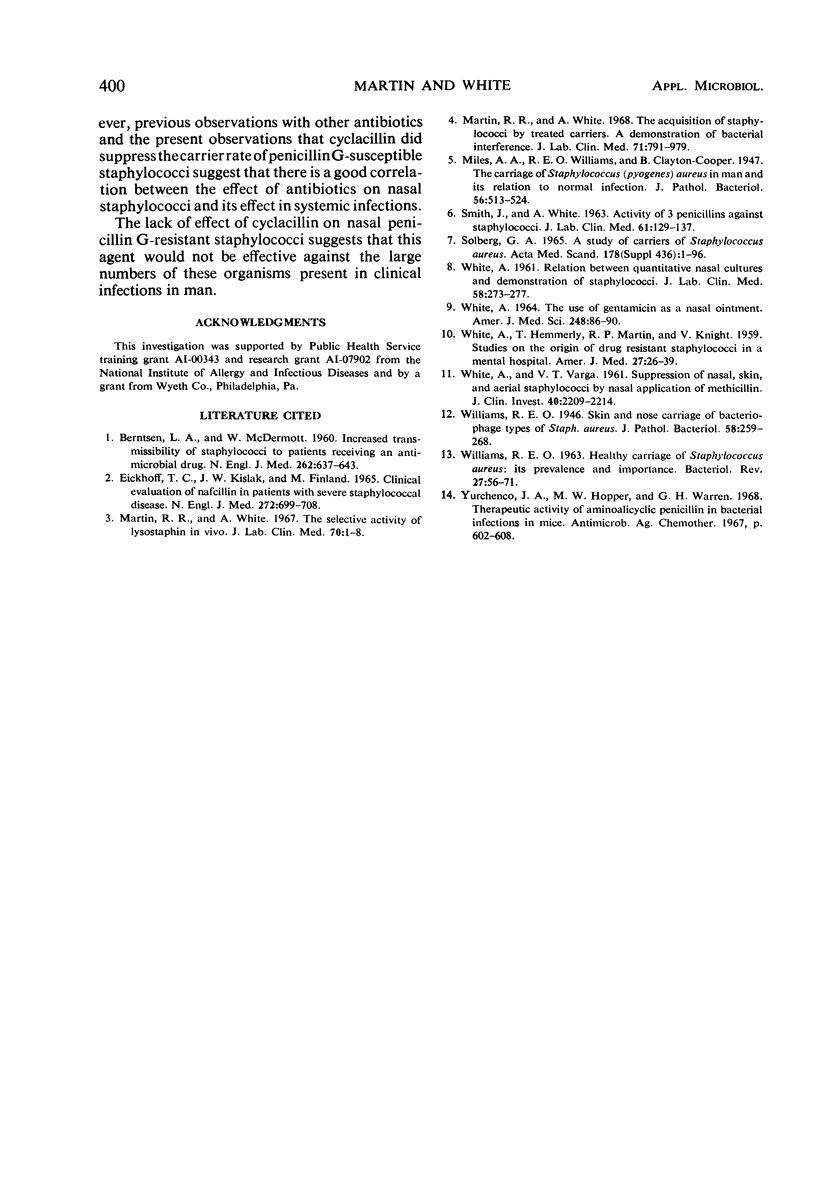Abstract
The use of the quantitative nasal culture was investigated as a means of evaluation of new antimicrobial drugs in man. Cyclacillin was somewhat more active in vitro than penicillin G against penicillin G-resistant organisms. Cyclacillin was highly effective in suppressing staphylococci susceptible to penicillin G in nasal carriers but did not suppress staphylococci resistant to penicillin G. Although in previous studies by others cyclacillin was effective in treating mice infected with penicillin G-resistant staphylococci, in the present studies cyclacillin was not effective in suppressing nasal penicillin G-resistant staphylococci in man at doses which markedly suppressed penicillin G-sensitive organisms.
Full text
PDF



Selected References
These references are in PubMed. This may not be the complete list of references from this article.
- BERNTSEN C. A., McDERMOTT W. Increased transmissibility of staphylococci to patients receiving an antimicrobial drug. N Engl J Med. 1960 Mar 31;262:637–642. doi: 10.1056/NEJM196003312621301. [DOI] [PubMed] [Google Scholar]
- Martin R. R., White A. The reacquisition of staphylococci by treated carriers: a demonstration of bacterial interference. J Lab Clin Med. 1968 May;71(5):791–797. [PubMed] [Google Scholar]
- Martin R. R., White A. The selective activity of lysostaphin in vivo. J Lab Clin Med. 1967 Jul;70(1):1–8. [PubMed] [Google Scholar]
- SMITH J., WHITE A. Activity of 3 penicillins against staphylococi. J Lab Clin Med. 1963 Jan;61:129–137. [PubMed] [Google Scholar]
- Solberg C. O. A study of carriers of Staphylococcus aureus with special regard to quantitative bacterial estimations. Acta Med Scand Suppl. 1965;436:1–96. [PubMed] [Google Scholar]
- VARGA D. T., WHITE A. Suppression of nasal, skin, and aerial staphylococci by nasal application of methicillin. J Clin Invest. 1961 Dec;40:2209–2214. doi: 10.1172/JCI104447. [DOI] [PMC free article] [PubMed] [Google Scholar]
- WHITE A., HEMMERLY T., MARTIN M. P., KNIGHT V. Studies on the origin of drug-resistant staphylococci in a mental hospital. Am J Med. 1959 Jul;27(1):26–39. doi: 10.1016/0002-9343(59)90058-0. [DOI] [PubMed] [Google Scholar]
- WHITE A. Relation between quantitative nasal cultures and dissemination of staphylococci. J Lab Clin Med. 1961 Aug;58:273–277. [PubMed] [Google Scholar]
- WILLIAMS R. E. Healthy carriage of Staphylococcus aureus: its prevalence and importance. Bacteriol Rev. 1963 Mar;27:56–71. doi: 10.1128/br.27.1.56-71.1963. [DOI] [PMC free article] [PubMed] [Google Scholar]
- Yurchenco J. A., Hopper M. W., Warren G. H. Therapeutic activity of aminoalicyclic penicillins in bacterial infections in mice. Antimicrob Agents Chemother (Bethesda) 1967;7:602–608. [PubMed] [Google Scholar]


